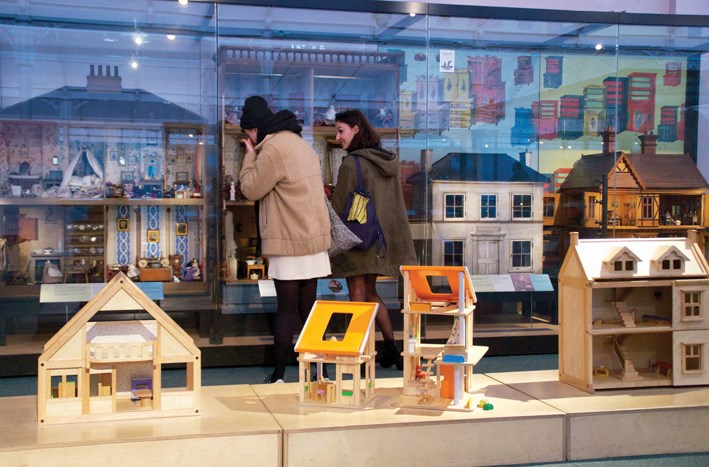The Victoria & Albert Museum rightly bills itself as the greatest museum of art and design in the world.
But it also operates one of the planet’s best children’s museums, which is found in Bethnal Green, a short ride east from the museum’s main South Kensington location, on the London Underground’s District Line.
Here the Museum of Childhood displays examples of toys from as early as 1300 BC up to the modern age.
This branch of what was then the South Kensington Museum opened in 1872, but only began to assemble a childhood-related collection in the 1920s after one curator noticed groups of bored and noisy children.
He hung paintings lower down so they could see them and persuaded wealthy patrons, including Queen Mary, to donate both individual toys and large collections.
Perhaps the greatest display in a museum that’s full of surprises and drenched in nostalgia is that of the doll houses, the earliest from 1750, their interiors crammed with tiny utensils, furniture, clocks and figurines.
Their histories and details of their former owners are given when known, and there are others that may be opened up and played with by visitors.
Elsewhere, the rocking horse is shown evolving from simple wooden species to one of 1910 with genuine deer skin on a body of wood and straw. Some may be mounted and tried out.
The core of the material is British, but this is an international collection. Puppets from all over the world include Indonesian leather puppets, Chinese shadow puppets, glove puppets and marionettes from different countries, displayed alongside familiar classic dolls with china heads and hand-painted faces, as well as Barbie, Ken and Action Man. The earliest of all is a paddle-shaped wooden doll from Egypt dating back to 1300 BC.
There are train sets, slot car racing sets, and building sets galore, ranging from simple wooden bricks to the programmable construction sets of today, as well as chemistry sets, musical instruments and ViewMasters. There’s also a display of children’s clothes from the mid-1600s to the present.
A large collection of clockwork tin toys of German manufacture, popular until the mid-20th century, is displayed alongside the electric train sets and battery-powered toys that superseded them.
Some early toys prepared children for jobs they might do as adults: Tinsmith contained a soldering iron, solder and pieces of tin. But Victorian attempts at animation involving mirrors and a revolving drum, like the praxinoscope are still capable of fascinating children, regardless of the fact that many have pockets containing devices with which they routinely shoot high-resolution video with sound.
And even many adults lecturing on the evils of screen-based gaming cannot resist waves of nostalgia at the sight of early Amstrad computers and GameBoys, seeming both modern and ancient at the same time.
The recently renovated building is an airy, galleried space, its distant roof supported by the slender iron columns and framing then newly popular with Victorian architects. There are still plenty of children here, but not a bored or noisy one in sight.
For more information on the Victoria & Albert Museum of Childhood visit its website at vam.ac.uk.
For information on London go to the Visit London website at visitlondon.com. For more travel stories go to the website culturelocker.com.



